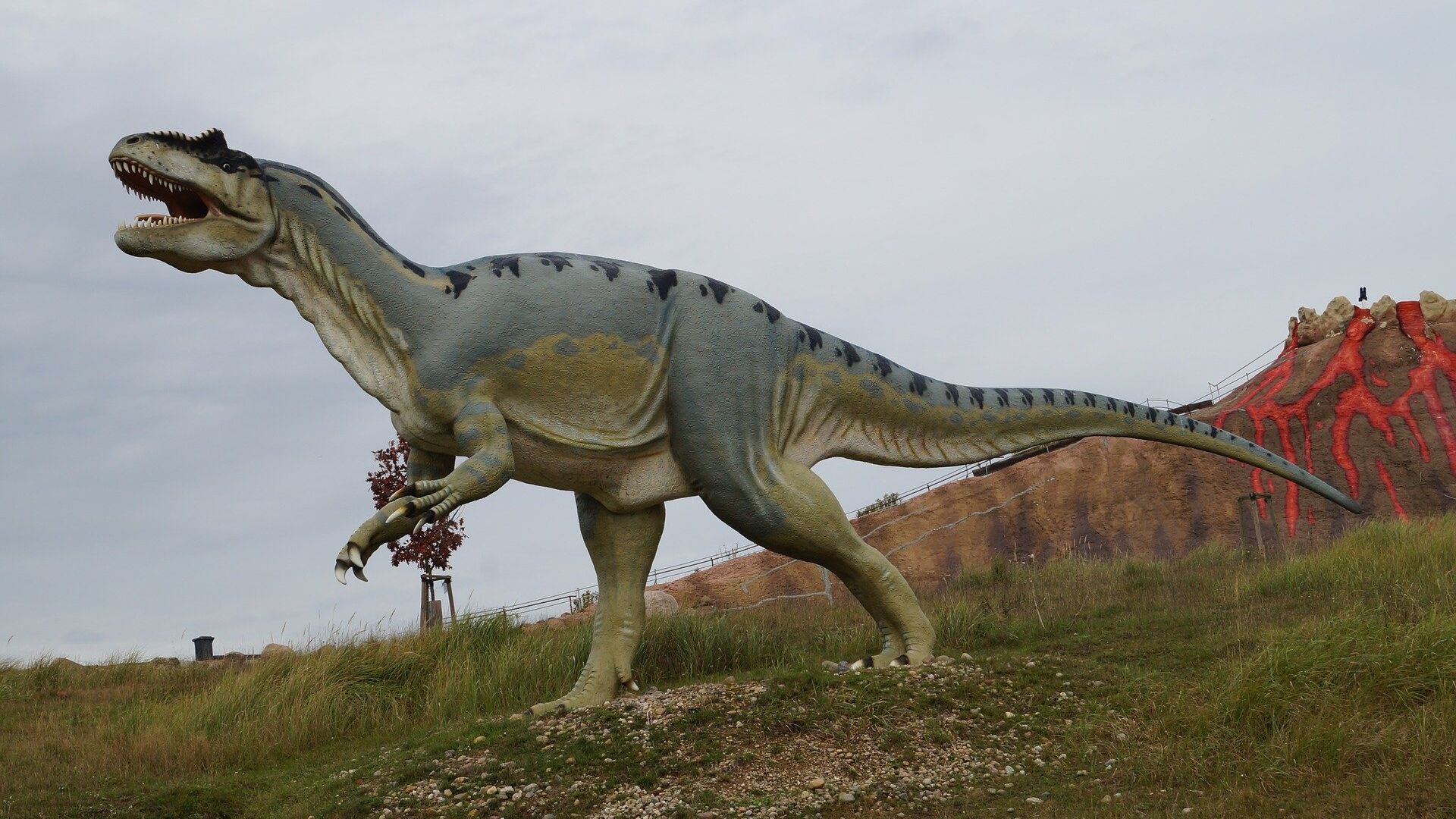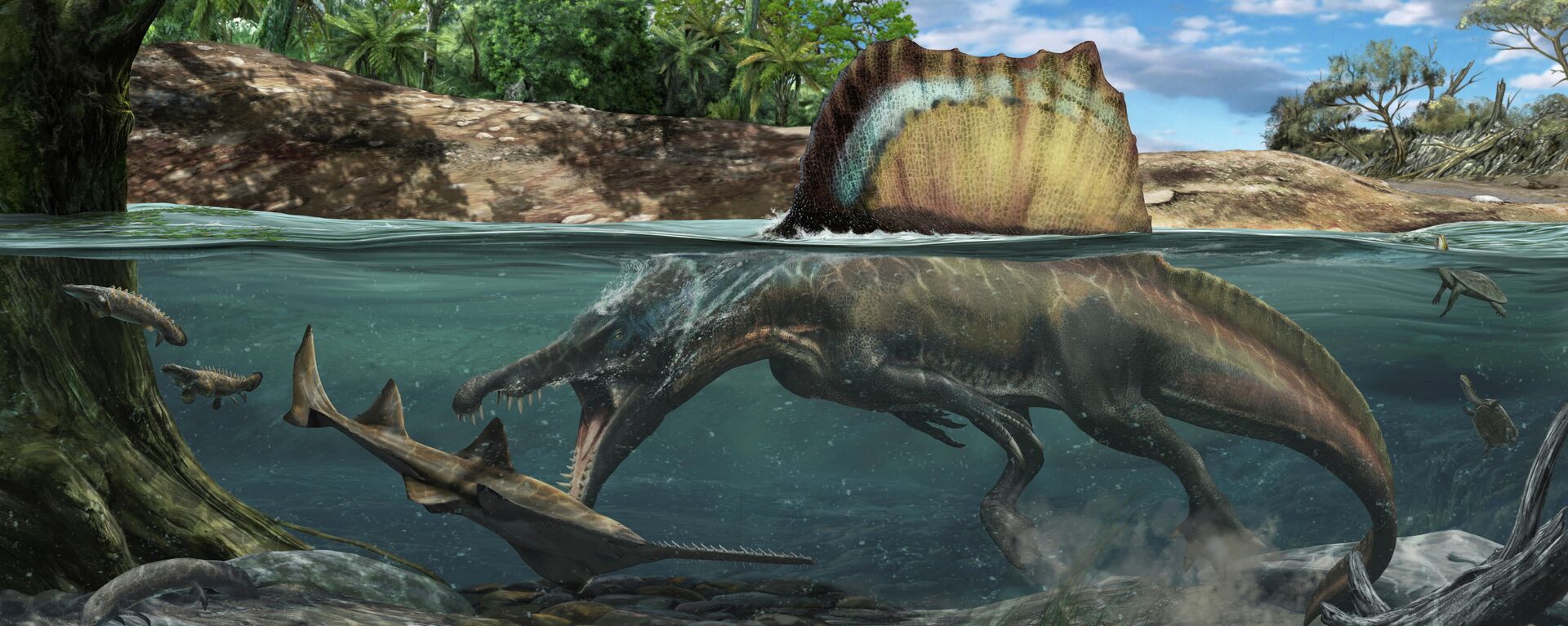https://sputnikglobe.com/20220402/size-matters-bold-new-theory-explains-why-t-rexs-arms-were-so-small-1094428871.html
Size Matters: Bold New Theory Explains Why T-Rex's Arms Were So Small
Size Matters: Bold New Theory Explains Why T-Rex's Arms Were So Small
Sputnik International
The author of the new hypothesis noted that his and other hypotheses related to the size of the T-rex’s arms may be hard to substantiate, as the dinosaur went... 02.04.2022, Sputnik International
2022-04-02T19:01+0000
2022-04-02T19:01+0000
2022-04-02T19:03+0000
science & tech
dinosaur
arms
hypothesis
https://cdn1.img.sputnikglobe.com/img/103654/74/1036547451_0:98:1920:1178_1920x0_80_0_0_b0e6ab31976e472b8a6d1461a5ba108c.jpg
Kevin Padian, a paleontologist and Professor of Integrative Biology at the University of California, Berkeley, has proposed a new hypothesis that might explain why the arms of the dinosaur known as Tyrannosaurus rex are so short.In a paper published in the Acta Palaeontologia Polonica journal, Padian postulates that T-rex’s arms decreased in length in order to prevent amputation – accidental or intentional – that might’ve otherwise occurred when a pack of these creatures set upon a carcass to feast.Thus, he suggested, “it could be a benefit to reduce the forelimbs, since you're not using them in predation anyway", noting that bite wounds could result in infection, haemorrhaging, shock, and eventual death.Padian noted that the predecessors of tyrannosaurids had longer arms, and that there must be a reason for these limbs’ decrease in size and joint mobility.He also observed, however, that any hypothesis regarding this development, including his hypothesis, will be hard to substantiate in light of the T-rex’s extinction millions of years ago.
https://sputnikglobe.com/20220324/bones-dont-lie-predatory-water-loving-dinosaur-could-swim-while-hunting-prey-claims-study-1094150258.html
Sputnik International
feedback@sputniknews.com
+74956456601
MIA „Rossiya Segodnya“
2022
Sputnik International
feedback@sputniknews.com
+74956456601
MIA „Rossiya Segodnya“
News
en_EN
Sputnik International
feedback@sputniknews.com
+74956456601
MIA „Rossiya Segodnya“
Sputnik International
feedback@sputniknews.com
+74956456601
MIA „Rossiya Segodnya“
science & tech, dinosaur, arms, hypothesis
science & tech, dinosaur, arms, hypothesis
Size Matters: Bold New Theory Explains Why T-Rex's Arms Were So Small
19:01 GMT 02.04.2022 (Updated: 19:03 GMT 02.04.2022) The author of the new hypothesis noted that his and other hypotheses related to the size of the T-rex’s arms may be hard to substantiate, as the dinosaur went extinct millions of years ago.
Kevin Padian, a paleontologist and Professor of Integrative Biology at the University of California, Berkeley, has proposed a new hypothesis that might explain why the arms of the dinosaur known as Tyrannosaurus rex are so short.
In a paper published in the Acta Palaeontologia Polonica journal, Padian postulates that T-rex’s arms decreased in length in order to prevent amputation – accidental or intentional – that might’ve otherwise occurred when a pack of these creatures set upon a carcass to feast.
"What if several adult tyrannosaurs converged on a carcass? You have a bunch of massive skulls, with incredibly powerful jaws and teeth, ripping and chomping down flesh and bone right next to you. What if your friend there thinks you're getting a little too close? They might warn you away by severing your arm", Padian said, as quoted by Phys.org.
Thus, he suggested, “it could be a benefit to reduce the forelimbs, since you're not using them in predation anyway", noting that bite wounds could result in infection, haemorrhaging, shock, and eventual death.
Padian noted that the predecessors of tyrannosaurids had longer arms, and that there must be a reason for these limbs’ decrease in size and joint mobility.
He also observed, however, that any hypothesis regarding this development, including his hypothesis, will be hard to substantiate in light of the T-rex’s extinction millions of years ago.


